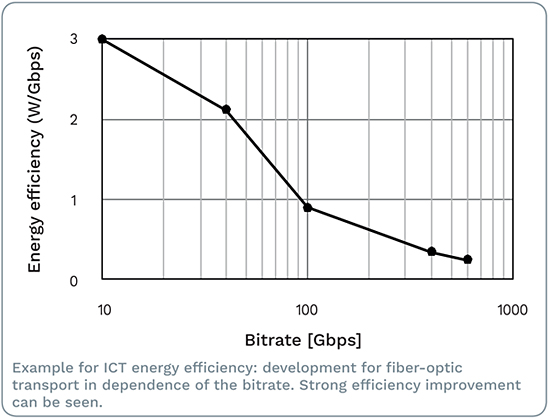The Science Based Targets initiative
is the most important global initiative
for companies to commit to carbon emissions
reductions.
By now, more
than 550 companies have committed,
with more than 200 having set targets.
Participants must define Scope-1
and Scope-2 targets according to
the Greenhouse Gas Protocol, and
in case their total emissions are
dominated by Scope-3, they must
define a related Scope-3 target as
well. In many cases, the first two
targets relate to owned transport (e.g.,
a company car pool) and purchased
electricity, respectively. Scope-3
targets, however, tend to being
sector-specific, and their approval
may consume considerable time.
Any targets must align with climate
science, i.e., they must support the
limitation of global temperature
increase compared to pre-industrial
time. In no case, absolute emission
increase is allowed. This again
may make certain Scope-3 targets
challenging.
ADVA decided to commit in
November 2016. We did this in
order to set environment-related
targets that the company can
follow strategically over a period
of 10 or more years. Our emissions
are dominated by sold-products
use-phase emissions, a Scope-3
contribution. These emissions
are caused by the electricity
consumption, and they can be
influenced by ecodesign focusing
on energy efficiency. The use phase
of our products is dominant for two
reasons. First, as ICT (information
and communications technology)
core-network equipment, the typical
use mode is 24/7 always-on, and
use phase often exceeds 10 years.
Second, the equipment is subject
to the quickly growing ICT bitrates.
This growth eats most of the gains
in energy efficiency, making the
related target challenging. In addition,
company growth must be considered,
especially for target runtimes of 10 or
more years.
ADVA submitted the three targets
in September 2017. After several
rounds of fruitful discussions with
the initiative (and related changes
and intensification), the targets were
approved in April 2019. For Scope-3,
we committed to 3% total reduction
of the use-phase emissions of all
products sold in the target year 2032,
compared to the base year 2016. This
seems to be low, but the reduction
has to work against both, company
growth (i.e., more products sold)
as well as the sustained ICT bitrate
growth that requires more powerful
equipment in terms of its throughput.
Over the next couple of years, this
target will drive our ecodesign
activities, leading to most energyefficient
products. This is supported
by improving emission factors, i.e.,
the amount of carbon emitted by
kilowatt-hour consumed.
Next to the increasing ICT bitrates
which made the Scope-3 target
challenging, there is another ICT
aspect worth considering in this
context. Proper use of ICT services
can enable decarbonization in other
areas, e.g., in transport, smart grids
etc. We sometimes call this Green
by ICT. In a global context, this could
mean that ICT may be given a certain
emissions allowance to support this.
The question for now remains how
to do this in a fair and scientific way.
Perhaps, this is for future rounds of
the initiative.
